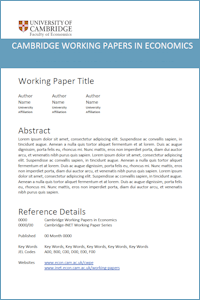
Zhou, W., Moncaster, A., O’Neill, E., Reiner, D., Wang, X., Guthrie, P.
Modelling future trends of annual embodied energy of urban residential building stock in China
CWPE2223
Abstract: China is the largest driver of growth in the global building sector. The longstanding construction boom across China has generated a massive flow of materials with significant associated embodied energy consumption and carbon emissions. Despite the serious implications for global emissions, there exist a very limited number of macro-level studies on embodied energy of Chinese buildings, with even fewer exploring future scenarios. There is therefore little in the way of an evidence base to offer policy makers. We develop a probabilistic model to forecast the possible trajectories of embodied energy of residential buildings over the medium to long term in the Chinese urban context. Our results provide clear evidence to substantiate the importance of embodied energy of new construction, which we find to be over 0.3 times the operational energy of existing stock between 2010 and 2018. If current trajectories are followed, embodied energy is likely to peak around 2027, with a 95% credible interval ranging from 87 to 283 Mtce (61 to 198 Mtoe) and a mean of 170 Mtce (119 Mtoe). We show that building lifetime has a substantial impact on future annual and cumulative embodied energy. Our findings reinforce the need to take a whole-life perspective to formulate policies addressing building energy as part of China's efforts to meet the announced overarching target of achieving carbon neutrality by 2060.
Keywords: Urban residential buildings, embodied energy, dynamic stock turnover, probabilistic model, material intensity, policy implications
JEL Codes: O18 R21 Q4
PDF: https://www.econ.cam.ac.uk/research-files/repec/cam/pdf/cwpe2223.pdf 
EPRG Paper Link: 2209
Open Access Link: https://doi.org/10.17863/CAM.83970
